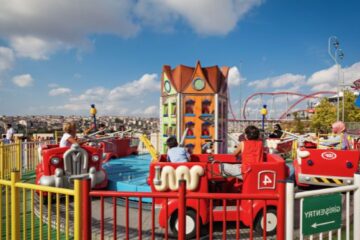
Introduction:
Nestled in the serene landscapes of various regions, from the misty mountains of Tibet to the lush green valleys of Bhutan, baby monks evoke a sense of wonder and fascination. These pint-sized practitioners of spirituality embark on a unique journey, blending the innocence of childhood with the profound teachings of ancient traditions. This article delves into the captivating world of baby monks, exploring their lifestyle, education, and the invaluable lessons they carry forward into adulthood.
I. The Birth of a Baby Monk
The path to becoming a baby monk often begins at a very young age, sometimes even before the child can fully comprehend the world around them. In cultures deeply rooted in Buddhism, such as in Tibet and Bhutan, families may choose to send their children to monasteries to be nurtured in the teachings of the Buddha. The decision to enroll a child in the monastic life is often driven by a belief in spiritual merit and the desire to contribute to the well-being of the child and the community.
II. Monastic Lifestyle
The daily life of a baby monk is a harmonious blend of discipline and playfulness. While adhering to a strict routine of prayer, meditation, and study, these young novices also engage in activities that foster creativity and camaraderie. The monastic environment provides a unique space where the seriousness of spiritual pursuit coexists with the joy and laughter of childhood.
- Morning Rituals:
- The day typically begins with morning rituals, where baby monks participate in prayer sessions and engage in chants that set a meditative tone for the day ahead. These rituals instill a sense of discipline and mindfulness from a very early age.
- Educational Pursuits:
- Baby monks undergo formal education within the monastery, studying Buddhist scriptures, philosophy, and meditation techniques. This intellectual development is complemented by physical and artistic activities, promoting a holistic approach to education.
- Playful Interludes:
- Amidst their spiritual responsibilities, baby monks also enjoy moments of playfulness. Monastery courtyards often echo with the laughter of children engaged in traditional games, art and craft activities, and even occasional celebrations.
III. Spiritual Education: Nurturing the Seeds of Wisdom
Central to the life of a baby monk is the pursuit of spiritual knowledge. The monastic education system is designed to impart the teachings of Buddhism, emphasizing compassion, mindfulness, and an understanding of the nature of existence. The curriculum often includes:
- Study of Buddhist Scriptures:
- Baby monks delve into the profound teachings found in Buddhist scriptures, gaining insights into the Four Noble Truths, the Eightfold Path, and other fundamental aspects of Buddhist philosophy.
- Meditation Practices:
- Meditation holds a pivotal role in the life of a baby monk. From simple breathing exercises to more advanced meditation techniques, these young practitioners learn to cultivate mindfulness and inner peace.
- Rituals and Ceremonies:
- Participating in rituals and ceremonies is an integral part of a baby monk’s spiritual education. These activities instill a sense of reverence and connect them with the rich tapestry of Buddhist traditions.
IV. The Role of Discipline: Shaping Character and Conduct
Discipline is a cornerstone of monastic life, and baby monks are introduced to its principles from the moment they enter the monastery. The structured routine, adherence to rules, and respect for elders contribute to the development of character and a strong ethical foundation.
- Respect for Elders:
- Baby monks are taught to respect and obey their seniors within the monastery. This practice fosters a sense of humility and an understanding of the importance of hierarchy in communal living.
- Self-Discipline:
- The monastic life emphasizes self-discipline, encouraging baby monks to regulate their behavior, thoughts, and emotions. This practice lays the groundwork for a disciplined and mindful approach to life.
- Community Living:
- Living in close-knit monastic communities teaches baby monks the value of cooperation and shared responsibilities. They learn to contribute to the well-being of the community and understand the importance of interdependence.
V. Challenges and Opportunities: Balancing Tradition with Modernity
While the life of a baby monk is deeply rooted in ancient traditions, the evolving landscape of the modern world presents both challenges and opportunities. Monasteries are increasingly recognizing the importance of integrating contemporary education alongside traditional teachings to equip young monks with skills that can serve them beyond the monastery walls.
- Modern Education Initiatives:
- Some monasteries have introduced modern educational subjects such as mathematics, science, and languages to provide baby monks with a well-rounded education. This approach aims to empower them to navigate the complexities of the modern world.
- Technological Exposure:
- Baby monks, like children everywhere, are not immune to the allure of technology. Monasteries are addressing this by incorporating responsible usage of technology into their education, ensuring that young monks are aware of its benefits and potential pitfalls.
- Cultural Preservation:
- The challenge lies in preserving the rich cultural and spiritual heritage of monastic life while preparing baby monks for an interconnected and rapidly changing global society. Striking this balance is crucial for the continuity of ancient traditions.
VI. Contributions to Society: Baby Monks as Agents of Compassion
The teachings and experiences gained by baby monks during their formative years contribute to the development of compassionate individuals who, as they grow older, become valuable members of society. The benefits extend beyond the walls of the monastery, as these individuals carry the teachings of compassion, mindfulness, and wisdom into the world.
- Community Service:
- Many monasteries actively engage in community service projects, and baby monks, despite their young age, participate in activities that contribute to the well-being of the local community. This may include assisting in schools, providing support to the elderly, or engaging in environmental conservation efforts.
- Cultural Ambassadors:
- Baby monks, as they mature into adult monks, often become cultural ambassadors, sharing the richness of their traditions with the world. They participate in cultural exchanges, educational programs, and spiritual events that promote understanding and harmony.
- Teaching and Guidance:
- Adult monks who were once baby monks themselves often take on roles as teachers and spiritual guides. They share their knowledge and experiences with new generations, ensuring the continuity of ancient wisdom.
VII. Conclusion
In conclusion, the world of baby monks is a captivating realm where the purity of childhood converges with the profound teachings of spirituality. As these young practitioners embark on a journey of self-discovery and enlightenment, they carry with them the seeds of wisdom, compassion, and serenity. The harmonious blend of discipline, education, and playfulness creates an environment that fosters holistic development, shaping individuals who contribute positively to their communities and the world at large. The enchanting world of baby monks continues to inspire awe and admiration, reminding us of the enduring power of ancient traditions in shaping the future.
Private Transfer from CDG to Disneyland Paris: Guide & Cost
October 1, 2025
Leave a reply Cancel reply
You must be logged in to post a comment.
More News
-
Is a Jeep the Right Choice for Your Drive?
February 21, 2024 -
Understanding How Bone Grafts Improve Dental Implant Treatments
February 26, 2024
Connect Us
World News
-
10 Reasons to Embrace Sustainable Fashion for Men in 2025
October 7, 2025 -
5 Common Myths About Climate-Controlled Storage Units—Debunked!
October 7, 2025 -
Private Transfer from CDG to Disneyland Paris: Guide & Cost
October 1, 2025
Most Viewed
Contact Us:
Newsowly: Navigating the News Frontier. We’re more than a news platform. We’re your daily news compass.
About Us
We are Newsowly – We simplify the complex world of news, making it accessible and engaging.
Contact: info@newsowly.com
Travel News
-
10 Reasons to Embrace Sustainable Fashion for Men in 2025
October 7, 2025 -
5 Common Myths About Climate-Controlled Storage Units—Debunked!
October 7, 2025 -
Private Transfer from CDG to Disneyland Paris: Guide & Cost
October 1, 2025











